 Facebook
Facebook
 X
X
 Instagram
Instagram
 TikTok
TikTok
 Youtube
Youtube
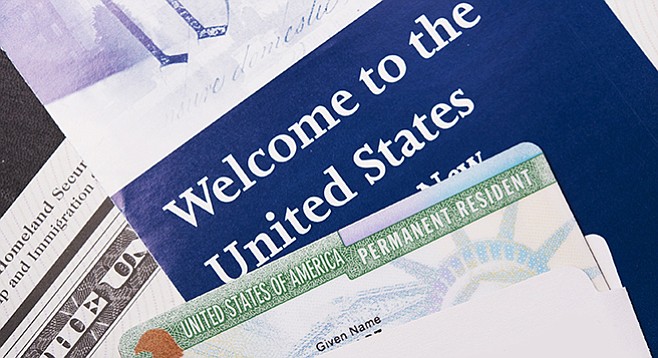
“Knowledge transfer.” It’s a scholarly sounding name for a vile practice that is stealing jobs from American engineers and forcing those soon-to-be-laid-off tech employees to train their foreign replacements. If American workers refuse to teach the ropes to their non–United States replacements, they will not get severance packages and bonuses. And some must sign a gag order promising not to tell anyone about this corporate rip-off.
However, a sufficient number of Americans fired from science, technology, engineering, and mathematics jobs have defied their former employers and told their stories. Now, the issue is front and center in this year’s presidential race.
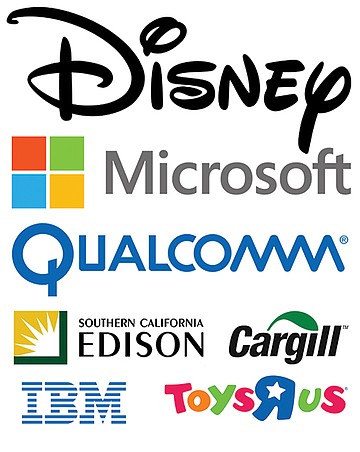
The foreign technical workers get visas to come to the United States through the H-1B program, which allows non-American citizens (often from India) to work up to six years in the United States. The San Diego Reader has been following H-1B abuses for five years. Another method for foreigners to swipe American jobs is for students with an F-1 visa to take Optional Practical Training, which permits them to work for a year with an American company.
The companies currently abusing the H-1B program most malodorously include Disney, Southern California Edison, Cargill, and Toys R Us. The blue chips that have been using H-1Bs for a long time include IBM, Microsoft, and San Diego’s Qualcomm.
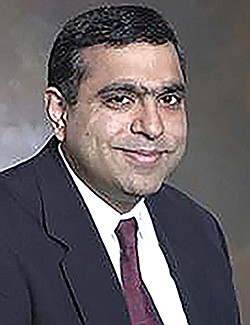
Under the law, the hiring of H-1Bs is not supposed to affect wages and working conditions of U.S. workers. In truth, however, the H-1Bs are brought in at significantly lower wages than the Americans they replace, says Ron Hira, researcher for the Economic Policy Institute and a professor at Howard University.
Hira points out that H-1B workers are supposed to be paid the “prevailing wage” for the position they fill. But at Edison, for example, the H-1Bs were paid $66,000 to $71,000 a year for jobs that Edison had been paying its now-fired employees $110,000 annually.
Hira says that one ex-Edison employee said, “They told us they could replace one of us with three, four, or five Indian personnel and still save money. They said, ‘We can get four Indian guys for cheaper than the price of you.’ You could [have heard] a pin drop in the room.”
After Edison’s cruelty became well known, ten senators wrote the United States Departments of Justice, Homeland Security, and Labor, asking them to investigate the H-1B program to determine if it was intended “to replace large numbers of American workers” at Edison. “To add insult to injury, many of the replaced American employees report that they have been forced to train the foreign workers who are taking their jobs,” said the letter.
Qualcomm has long been one of the major blue-chip companies using the H-1B program. Last year, the telecom behemoth announced it would sever 15 percent of its total workforce. Immediately, employees began posting bitter statements on thelayoff.com, saying that the H-1Bs, who are hired for less pay, would not get the axe. Not long before the layoff announcement, the company had lobbied the federal government to increase the number of H-1B visas given each year. Says a Qualcomm spokesperson, “Within the U.S., [the layoffs] affected U.S. citizens as well as those working under various types of visas. Indeed, federal law prohibits companies from selecting — or not selecting — individuals for reduction in force because of their visa status.”
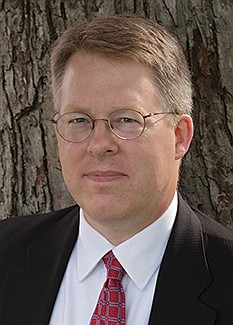
Wham! Critics of H-1B jump on such a statement, which has been made by other companies. “Companies are claiming they cannot differentiate between citizens and non-citizens when firing,” says Russell Harrison, director of governmental relations for the Institute of Electrical and Electronics Engineers–USA. If what Qualcomm says is true, the companies “can’t fire Americans and hire H-1Bs to replace them.” Actions by Edison and Disney would be illegal. Harrison has seen anecdotal evidence of Qualcomm’s discrimination against American engineers during last year’s layoffs. “[The H-1Bs] are cheaper.” Qualcomm is still lobbying for the government to let in more H-1Bs.
Gene Nelson of San Luis Obispo, a PhD in radiation biophysics who spent his career in tech, says, “Qualcomm is one of the worst [companies] for its abuse of H-1Bs. It wants the youngest, least expensive workforce.” Nelson says a primary reason to cut jobs of Americans is to magnify profits and justify “extortionate pay” of top management. Qualcomm is infamous for the pay of its two top executives.
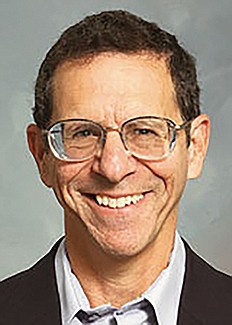
Norm Matloff, a professor at the University of California at Davis, has long argued that companies use the H-1B program to lower the general wage levels of engineers. Company lobbyists claim there is a shortage of American-born-and-trained engineers. That’s false, says Matloff. The H-1Bs are “cheap, immobile labor” for as long as they stay in the United States. Companies get away with paying H-1Bs low wages because of “gaping loopholes in H-1B law.” H-1B abuses pervade the entire tech industry, says Matloff.
H-1B defenders say the incoming workers are “the best and the brightest.” Not so, says Matloff on his website. “The average quality of the H-1Bs is lower than that of the Americans.”
Adds Matloff, “Age is a core H-1B issue. Most H-1Bs are under 30, and since younger workers are cheaper than older ones in both wages and health care costs, employers use the H-1B program to avoid hiring older Americans.” That’s legal age discrimination says Matloff.
Harrison says widespread disapproval of the Edison and Disney layoffs has changed the picture in Washington DC, slightly for the better. A bill to expand H-1B has not gone anywhere, although another bill to curb the practices hasn’t moved, either.
If you are an engineer, whom should you vote for? Ted Cruz is cosponsoring a bill that would rein in H-1B. Donald Trump initially came out against H-1B. Then it appeared he had changed his mind. His staff quickly said he remains opposed to H-1B. Bernie Sanders also opposes it. Clinton has said little but has been for it in the past. Rubio, now out of the race, cosponsored one of the pro–H-1B bills. So, Trump, Cruz, and Sanders are the presidential candidates most strongly opposed to H-1B, says Harrison.
Unfortunately, he says, “Most members of Congress still accept the business argument that companies only bring in H-1Bs when no American worker is available. They think there are only a few bad actors.” It isn’t so.


“Knowledge transfer.” It’s a scholarly sounding name for a vile practice that is stealing jobs from American engineers and forcing those soon-to-be-laid-off tech employees to train their foreign replacements. If American workers refuse to teach the ropes to their non–United States replacements, they will not get severance packages and bonuses. And some must sign a gag order promising not to tell anyone about this corporate rip-off.
However, a sufficient number of Americans fired from science, technology, engineering, and mathematics jobs have defied their former employers and told their stories. Now, the issue is front and center in this year’s presidential race.

The foreign technical workers get visas to come to the United States through the H-1B program, which allows non-American citizens (often from India) to work up to six years in the United States. The San Diego Reader has been following H-1B abuses for five years. Another method for foreigners to swipe American jobs is for students with an F-1 visa to take Optional Practical Training, which permits them to work for a year with an American company.
The companies currently abusing the H-1B program most malodorously include Disney, Southern California Edison, Cargill, and Toys R Us. The blue chips that have been using H-1Bs for a long time include IBM, Microsoft, and San Diego’s Qualcomm.

Under the law, the hiring of H-1Bs is not supposed to affect wages and working conditions of U.S. workers. In truth, however, the H-1Bs are brought in at significantly lower wages than the Americans they replace, says Ron Hira, researcher for the Economic Policy Institute and a professor at Howard University.
Hira points out that H-1B workers are supposed to be paid the “prevailing wage” for the position they fill. But at Edison, for example, the H-1Bs were paid $66,000 to $71,000 a year for jobs that Edison had been paying its now-fired employees $110,000 annually.
Hira says that one ex-Edison employee said, “They told us they could replace one of us with three, four, or five Indian personnel and still save money. They said, ‘We can get four Indian guys for cheaper than the price of you.’ You could [have heard] a pin drop in the room.”
After Edison’s cruelty became well known, ten senators wrote the United States Departments of Justice, Homeland Security, and Labor, asking them to investigate the H-1B program to determine if it was intended “to replace large numbers of American workers” at Edison. “To add insult to injury, many of the replaced American employees report that they have been forced to train the foreign workers who are taking their jobs,” said the letter.
Qualcomm has long been one of the major blue-chip companies using the H-1B program. Last year, the telecom behemoth announced it would sever 15 percent of its total workforce. Immediately, employees began posting bitter statements on thelayoff.com, saying that the H-1Bs, who are hired for less pay, would not get the axe. Not long before the layoff announcement, the company had lobbied the federal government to increase the number of H-1B visas given each year. Says a Qualcomm spokesperson, “Within the U.S., [the layoffs] affected U.S. citizens as well as those working under various types of visas. Indeed, federal law prohibits companies from selecting — or not selecting — individuals for reduction in force because of their visa status.”

Wham! Critics of H-1B jump on such a statement, which has been made by other companies. “Companies are claiming they cannot differentiate between citizens and non-citizens when firing,” says Russell Harrison, director of governmental relations for the Institute of Electrical and Electronics Engineers–USA. If what Qualcomm says is true, the companies “can’t fire Americans and hire H-1Bs to replace them.” Actions by Edison and Disney would be illegal. Harrison has seen anecdotal evidence of Qualcomm’s discrimination against American engineers during last year’s layoffs. “[The H-1Bs] are cheaper.” Qualcomm is still lobbying for the government to let in more H-1Bs.
Gene Nelson of San Luis Obispo, a PhD in radiation biophysics who spent his career in tech, says, “Qualcomm is one of the worst [companies] for its abuse of H-1Bs. It wants the youngest, least expensive workforce.” Nelson says a primary reason to cut jobs of Americans is to magnify profits and justify “extortionate pay” of top management. Qualcomm is infamous for the pay of its two top executives.

Norm Matloff, a professor at the University of California at Davis, has long argued that companies use the H-1B program to lower the general wage levels of engineers. Company lobbyists claim there is a shortage of American-born-and-trained engineers. That’s false, says Matloff. The H-1Bs are “cheap, immobile labor” for as long as they stay in the United States. Companies get away with paying H-1Bs low wages because of “gaping loopholes in H-1B law.” H-1B abuses pervade the entire tech industry, says Matloff.
H-1B defenders say the incoming workers are “the best and the brightest.” Not so, says Matloff on his website. “The average quality of the H-1Bs is lower than that of the Americans.”
Adds Matloff, “Age is a core H-1B issue. Most H-1Bs are under 30, and since younger workers are cheaper than older ones in both wages and health care costs, employers use the H-1B program to avoid hiring older Americans.” That’s legal age discrimination says Matloff.
Harrison says widespread disapproval of the Edison and Disney layoffs has changed the picture in Washington DC, slightly for the better. A bill to expand H-1B has not gone anywhere, although another bill to curb the practices hasn’t moved, either.
If you are an engineer, whom should you vote for? Ted Cruz is cosponsoring a bill that would rein in H-1B. Donald Trump initially came out against H-1B. Then it appeared he had changed his mind. His staff quickly said he remains opposed to H-1B. Bernie Sanders also opposes it. Clinton has said little but has been for it in the past. Rubio, now out of the race, cosponsored one of the pro–H-1B bills. So, Trump, Cruz, and Sanders are the presidential candidates most strongly opposed to H-1B, says Harrison.
Unfortunately, he says, “Most members of Congress still accept the business argument that companies only bring in H-1Bs when no American worker is available. They think there are only a few bad actors.” It isn’t so.
Comments